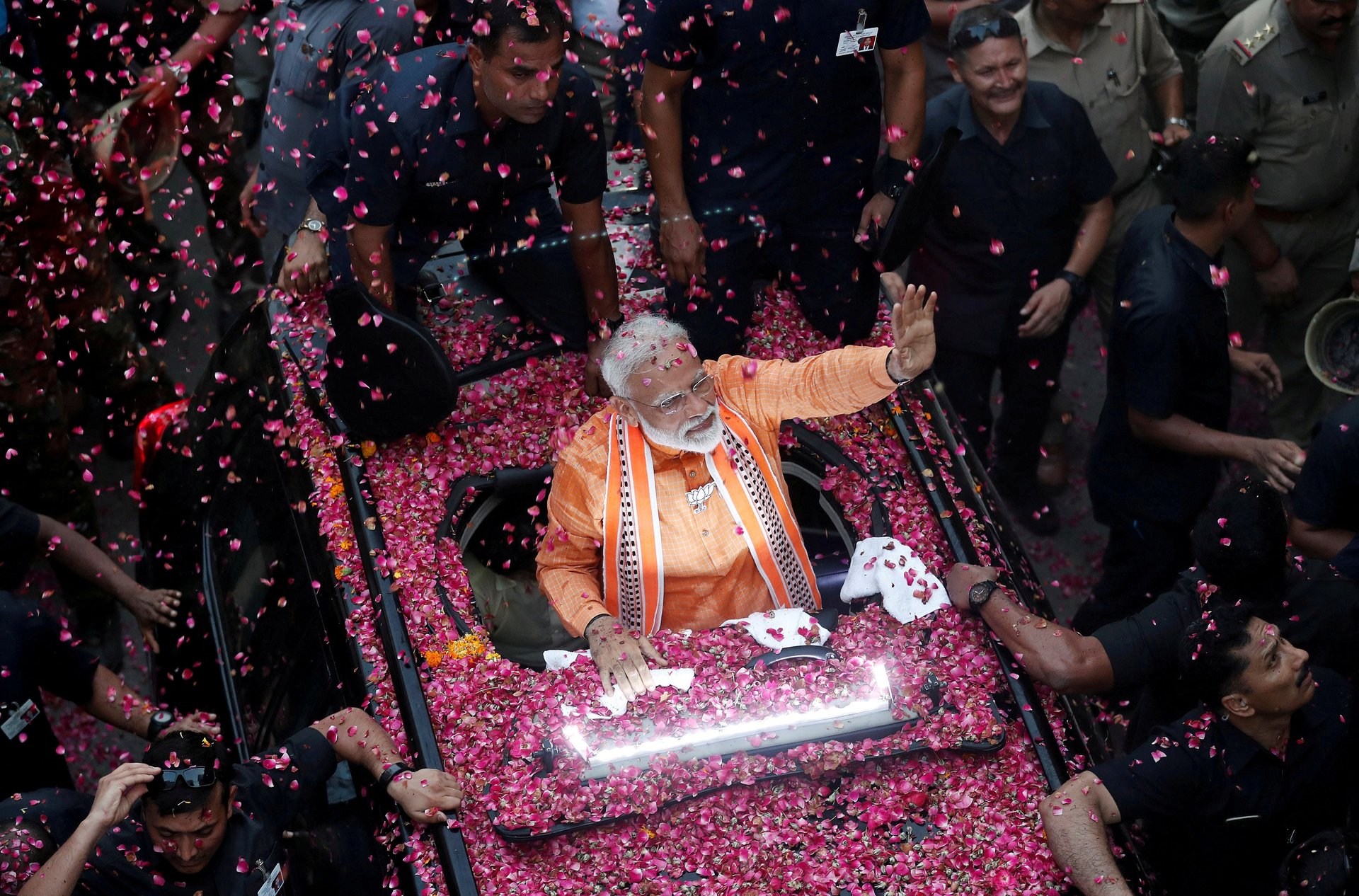There is no stopping Narendra Modi as he laps up a second term as Indian prime minister
This post was updated at 6pm.


This post was updated at 6pm.
Narendra Damodardas Modi is poised to sweep back to power in India.
Late trends in the counting of votes till around 6pm today (May 23) showed the incumbent prime minister set for a second term. His Bharatiya Janata Party (BJP), leading the National Democratic Alliance (NDA), gained a massive lead over its main rival, the Indian National Congress (Congress), and the United Progressive Alliance (UPA) that it heads, in the 2019 general election.
Latest reports showed the NDA leading in over 350 seats across the country, while it only needs to win 272 and form a government in the Lok Sabha, the lower house of parliament. The UPA, led by Congress scion Rahul Gandhi, was leading in some 90 seats. The BJP itself improved its tally to 298, 16 more than in the 2014 election.
Though the UPA, too, improved its performance from 2014, when it had only 69 Lok Sabha seats, this is far from being a credible challenge to the NDA.
Acrimony and more
Today’s declaration of results caps almost a month-and-a-half of the world’s largest democratic exercise, which saw around 900 million Indians cast their votes to elect 542 parliamentarians. It is also a culmination of an acrimonious five years under prime minister Narendra Modi’s first term, accentuated by the campaign period that saw several instances of uncharitable exchanges between rivals, including Modi and Gandhi.
Modi took power in 2014 with the promise of shaking India out of the moribund state of affairs that the previous government had left it in. However, his brand of aggressive Hindu nationalism also cast a shadow over the larger Indian society over the next five years. While under his prime ministership the Indian economy didn’t exactly take off, he deftly managed to shift the focus away towards more emotive issues like nationalism, security, and religious identity.
Neither did the opposition, as represented by Rahul Gandhi’s Congress party, show any stomach for a fight. Even after five years, it has not managed to come out of the rubble that the 2014 election had reduced it to, as is evident by the numbers this time. Attempts to form alliances have been half-hearted at best and even existing tie-ups, like in the southern state of Karnataka between the Congress and the Janata Dal Secular, have been wracked by bickering and mutual distrust.
On the other hand, under party president Amit Shah, the BJP has ably lapped up allies and mended fences with the ones it had trouble with—all well in time for the election.
The decisive results of election 2019 could be read as much as a reflection of Modi’s approval among voters as they are a rejection of a sclerotic opposition, particularly under the key figurehead of Gandhi.
The markets reacted exuberantly to the results. The BSE Sensex was up 765 points at around 11am on Thursday, while the NSE Nifty was up 247.
This post will be updated as the counting progress and the numbers become more clear.